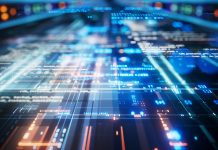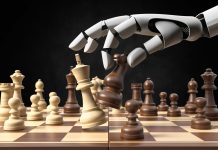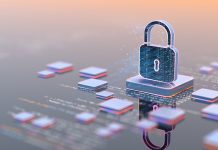Monica Arés, Executive Director of Imperial College Business School’s Innovation, Digital Education & Analytics (IDEA) Lab, examines how AI and XR hold the key to inclusive STEM learning
Despite its vast potential, higher education has yet to fully harness the capabilities of artificial intelligence (AI), extended reality (XR), and spatial computing.
These technologies are poised to revolutionise our approach to knowledge, addressing challenges around student disengagement and rigid learning models – both of which pose as barriers to inclusion – by merging human intellect with advanced tech solutions. This integration enables learning that is not only interactive but also deeply personalised, adapting to individual voices, languages, gestures, and gazes. We are redefining what it means to learn and teach in an age where the convergence of our physical and digital worlds is offering us an entirely new set of tools from which to build solutions.
STEM: Inclusivity-related challenges
Few spaces are as plagued by inclusivity-related challenges as STEM (science, technology, engineering, and mathematics) education. Beyond well-documented factors impacting inclusion within STEM, such as stereotyping and a lack of gender representation (role models), pedagogy bears much responsibility. The aforementioned rigidity amongst teaching styles, as well as outdated assessment methods, alienate and box in students.
At Imperial, we recognise the need for new ways of thinking, learning, and assessment to improve inclusion, not just for STEM students but in all areas of higher education. But how can institutions use AI and other new technologies to make STEM and other areas of education more inclusive?
AI optimising institutional data
When redefining traditional educational models by developing advanced learning experiences and simulations, we can leverage extensive cloud-based course data and integrate it into large language models (LLMs), robust ‘AI-ready knowledge containers’ that facilitate highly tailored educational experiences have been created. These datasets are specifically engineered to support four key AI-driven outputs – assistants, simulations, feedback, and analytics – which dynamically enhance our learning environments. This strategy not only optimises institutional data but also sets new benchmarks in technological education.
AI-driven professors, equipped with deep learning algorithms from course materials and research, can serve as an ‘always-on tutor,’ accessible through mobile or desktop using voice, natural language, or text. These virtual avatars assist students by answering questions, explaining concepts, offering feedback, facilitating brainstorming sessions, and guiding study groups. Initial studies involving 30 participants have demonstrated that these AI professors not only exhibit high levels of analytical thinking but also maintain moderate influence and a positive emotional tone.
The enhanced interactivity and responsiveness of these AI tools are specifically designed to boost student engagement and develop key competencies such as effective communication and strategic thinking.
AI, VR and blockchain technology
In addition, piloting simulations that incorporate both AI and VR technologies, offer a unique blend of practice through natural language interaction, interactive learning, and detailed feedback. These advanced tools are unlocking dynamic and intuitive ‘rehearsal’ spaces, previously unattainable on such a scale, enabling students to develop fluency and confidence in critical areas like problem-solving, communication, and leadership. As technologies evolve, we anticipate integrating biometric monitoring to further tailor educational experiences, adapting in real-time to students’ emotional and cognitive states.
Data, analytics, and knowledge management
At the foundation of all this lies a new capability for data, analytics, and knowledge management. This enables lecturers and other staff to analyse course materials, streamline development, and integrate these new tools and experiences into AI-driven systems, thereby setting a new standard in technological education and training.
We are also exploring the integration of blockchain technology to securely manage digital credentialing for lifelong learning, providing a transparent, immutable record of academic achievements that enhances both the integrity and portability of credentials.
Additionally, the potential future integration of quantum computing into our educational data analysis promises to significantly increase processing power, enabling complex simulations and real-time data analytics that could revolutionise predictive models in learning outcomes.
Inclusive STEM learning: Teaching in an era of rapid innovation
We are in a period of rapid innovation where technological prowess has never been more highly prized. As such, STEM teaching has never been more important. However, we need institutions that think differently and are prepared to innovate to create the best experiences and foster success for their students.
However, transforming the educational landscape – particularly the area of STEM – into a more inclusive and personalised space cannot be accomplished by institutions alone.
A concerted effort from universities, edtech firms, startups, businesses, and policymakers is essential to forge partnerships that will drive innovation. Through these collaborations, we can create technology-enriched learning environments that are accessible, effective, and responsibly managed.
Universities must embrace a dual role as both educators and innovators to accelerate the translation of academic research into practical, impactful applications. At Imperial, inclusivity is central to our educational approach. We are leveraging cutting-edge technology to level the playing field and are committed to making our class of 2030 the most diverse and technologically empowered yet. Our mission is to foster curiosity, innovation, and a passion for lifelong learning.
Together, we can transform education into a powerful and limitless journey that meets and anticipates the demands of the future.











